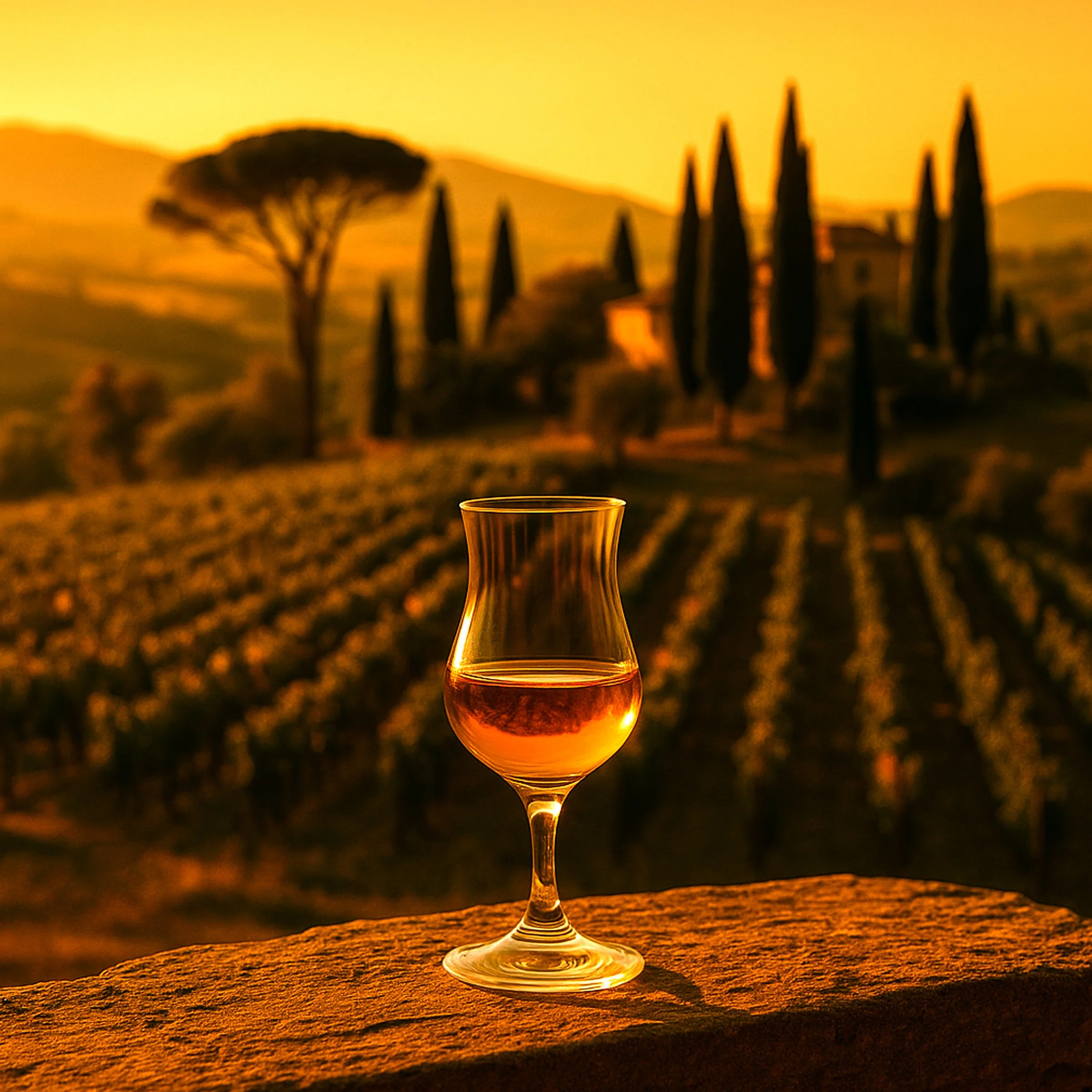GRAPPA
Italy’s Bold, Distilled Soul of the Grape
Grappa is a fiery, aromatic Italian spirit distilled from the pomace—the skins, seeds, and stems—left over after winemaking. Once considered a rustic byproduct, modern Grappa has evolved into a category of finesse, regional diversity, and surprising elegance. Produced throughout Italy, it captures the essence of the grape in its most concentrated form. Whether raw and punchy or smooth and aged, Grappa is unmistakably Italian—intense, expressive, and often deeply tied to its origin.
Key Characteristics
Grappa is typically dry, high in alcohol, and intensely aromatic. Younger styles are sharp and fruit-driven, while aged versions develop rounder textures and layered flavors from time in oak.
Style
Pomace-based brandy (typically unaged)
Body
Medium to full
Alcohol
40–50% ABV
Base Fruit
Grape pomace—often from a single variety (e.g. Nebbiolo, Moscato, Barbera)
Typical Flavors
Fresh grape skin, green herbs, white pepper, floral notes, almond, citrus peel, dried fruit (in aged versions)
Origin & History
Grappa has been made in Italy since at least the Middle Ages, originally as a peasant spirit distilled from winemaking leftovers. It was valued for its strength, availability, and ability to warm through cold Alpine winters. Today, it is a protected category under EU law—Grappa must be made in Italy, from Italian pomace, and distilled entirely within the country. Once seen as coarse, Grappa is now crafted with care by artisanal producers who focus on grape variety, purity, and sometimes aging.
How It’s Made
Grappa begins with freshly fermented pomace—grape solids that still contain alcohol. This material is distilled quickly (to avoid spoilage) in copper stills, either in batches or continuously. The resulting clear spirit may be bottled immediately or aged in oak barrels for smoother texture and added complexity. Some Grappas are single-varietal, showcasing specific grapes like Barolo’s Nebbiolo or Sicily’s Nero d’Avola.
Notable Regions
Grappa is made throughout Italy, but certain regions are especially known for their distinctive expressions.
Piedmont
Nebbiolo-based Grappas; structured, earthy, and sometimes aged
Veneto
Light, floral styles, often from Glera (Prosecco) or Moscato
Trentino-Alto Adige
Known for clarity and alpine freshness; home to top artisanal distillers
Sicily & Southern Italy
Bolder Grappas from native grapes like Nero d’Avola or Aglianico
Cocktail Pairings
Traditionally sipped neat, but increasingly used in creative, herbal, and fruit-forward cocktails.
Traditional
Serve neat after a meal (digestivo), or with espresso (as a “corretto”)
Creative
Grappa sour with lemon and egg white, alpine spritz with elderflower and soda
Modern
Herbal highballs with mint or basil, spiced Grappa with ginger and pear
Food Pairings
Grappa’s intensity and dryness pair well with strong cheeses, rich meats, and subtly sweet desserts.
Cheese
Taleggio, Gorgonzola, aged Parmigiano-Reggiano
Savory
Speck, braised beef, wild mushroom risotto, charred radicchio
Dessert
Almond biscotti, fig tart, dark chocolate with sea salt, citrus olive oil cake
How to Serve It
Glassware
Small tulip glass or Grappa stem to focus aromatics
Temperature
Cool (50–55°F / 10–13°C); slightly warmer for aged expressions
Storage
Store upright in a cool, dark place; unaged Grappa is best within a year of opening
Fun Fact
By law, only spirits made in Italy from Italian pomace can be labeled Grappa—making it as protected and regionally defined as Champagne or Parmigiano-Reggiano.
Recommended Producers
These houses exemplify the diversity and craftsmanship of grappa, transforming pomace into elegant distillates that express both varietal character and regional tradition.
Jacopo Poli
A legendary distiller known for precision and innovation, producing age-worthy grappas like Grappa di Sassicaia that combine power, finesse, and oak-aged depth.
Michele Chiarlo
A respected Piedmont producer whose Palas Grappa di Moscato captures the aromatic charm of Muscat grapes in a smooth, floral spirit.
Recommended Pours
Jacopo Poli - Grappa di Sassicaia (375ml) — A refined barrel-aged grappa distilled from Sassicaia pomace, offering elegant notes of dried fruit, spice, and oak with a smooth, lingering finish.
Michele Chiarlo Palas Grappa Di Moscato — A fragrant and delicately sweet grappa with floral aromatics, ripe peach, and a soft, silky texture.



